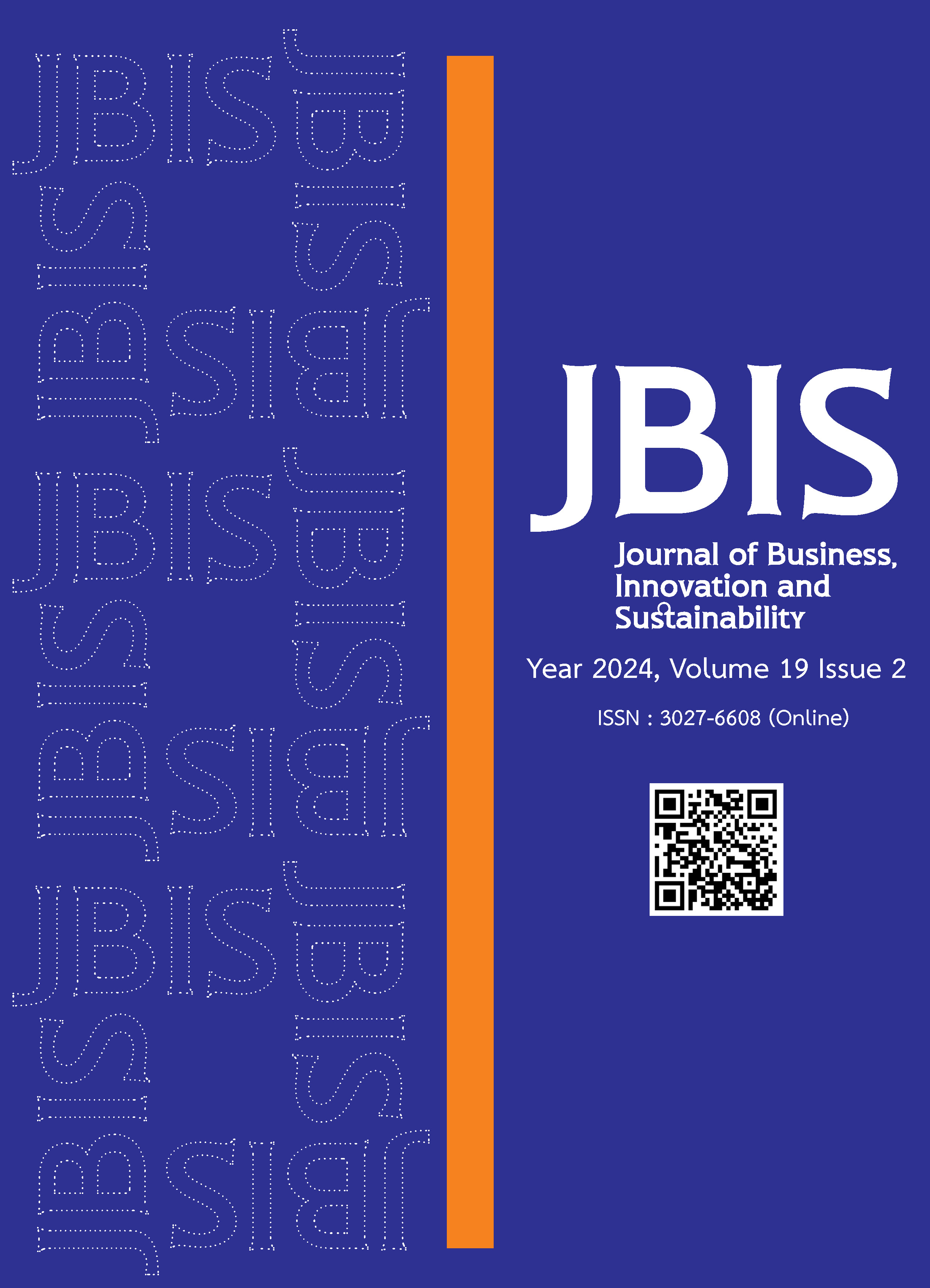The Effect of Thai Baht Volatility on the Employment Rate in Thailand
Main Article Content
บทคัดย่อ
The purposes of this study are to identify the effects of Thai Baht volatility on the employment rate in Thailand by using the Autoregressive Conditional Heteroskedasticity model to identify the volatility of the exchange rate as an independent variable and to make a comparison between each independent variable, such as the exchange rate between the Thai Baht and the US dollar, Real Effective Exchange Rate, moving average of the exchange rate, Gross Domestic Product, the Thai population, gold price, the number of employees, and total size of the Thai labor forces, the researcher decided to use multiple linear regression as the model for this research to study the relationship on employment rate in Thailand. The research instrument used in collecting the data is secondary data, the sample size is 110 months in a time series collected from January 2011 until February 2020. Based on the investigation, it was concluded that the exchange rate volatility using the autoregressive conditional heteroskedasticity model has little effect on the Thai employment rate, but a movement in Thai Gross Domestic Product (GDP) affected the employment rate in the same direction with a high statistical significance and the number of Thai populations aged 15 to 60 years also affected the employment rate with high statistical significance, but in the opposite direction.
Article Details

อนุญาตภายใต้เงื่อนไข Creative Commons Attribution-NonCommercial-NoDerivatives 4.0 International License.
เอกสารอ้างอิง
Ahmad, M., Ghouse, G., Hashmat, A., Rehman, N. U., Aslam, A. and Raza, S. (2020). Impact of employment rate, exchange rate and foreign direct investment on workers emittances and economic growth. Ilkogretim Online - Elementary Education Online, 19(4), 4257- 4265.
Akkay, R. C. (2021). The real effective exchange rate and industrial employment: The Turkish case. Business and Economics Research, 12(3), 491-507.
Bakhshi, Z. and Ebrahimi, M. (2016). The effect of real exchange rate on unemployment. Marketing and Branding Research, 3, 4-13.
Bank of Thailand. (2023a). The use of local currency in trading. Retrieved January 20, 2023, from https://www.bot.or.th/th/our-roles/financial-markets/Foreign-Exchange-Market/Fx-hedging/hedging-tools/local-currency.html
Bank of Thailand. (2023b). Foreign exchange market & foreign currency market. Retrieved January 20, 2023, from https://www.bot.or.th/th/our-roles/financial-markets/Foreign-Exchange-Market.html
Chipeta, C., Meyer, D. F. and Muzindutsi, P. F. (2017). The effect of exchange rate movements and economic growth on job creation. Studia Universitatis Babes-Bolyai, Oeconomica, 62(2), 20-41.
Corporate Finance Institute. (2023). Floating exchange rate. Retrieved December 10, 2022, from https://corporatefinanceinstitute.com/resources/economics/floating-exchange-rate/
Cumsawat, P. (2021). Economic factors on exchange rate between baht and US dollars: Error-correction model. Sripatum Chonburi Academic Journal, 17(4), 1-11.
Demir, F. (2010). Exchange rate volatility and employment growth in developing countries: Evidence from Turkey. World development, 38(8), 1127-1140.
Fernando, J. (2023). Gross Domestic Product (GDP): Formula and how to use it. Retrieved December 2, 2022, from https://www.investopedia.com/terms/g/gdp.asp
Geerolf, F. (2020). The Phillips curve: A relation between real exchange rate growth and unemployment. Doctoral dissertation, Ph.D., University of California, California.
Greene, W. H. (2008). Econometric analysis (6th ed.). Upper Saddle River: Pearson Prentice Hall.
Hamilton, A. (2018). Understanding exchange rates and why they are important. Retrieved November 7, 2022, from https://www.rba.gov.au/publications/bulletin/2018/dec/pdf/understanding-exchange-rates-and-why-they-are-important.pdf
He, X. (2013). Real effective exchange rate and unemployment rate: The difference between re-exporting and non-re-exporting countries. Master Thesis, M. A., Clemson University, United States of America.
Hua, P. (January 20-21, 2011). The economic and social effects of real exchange rate - Evidence from the Chinese provinces. In International Conference on Social Cohesion and Development (pp. 1-31). Paris: OECD Development Centre.
Huang, H., Pang, K. and Tang, Y. (2014). Effects of exchange rates on employment in Canada. Canadian public policy, 40(4), 339-352.
Jaffri, A. A., Amreen, H., Asjed, R. and Sana, M. (2017). Impact of real effective exchange rate on unemployment in Pakistan: An empirical investigation. Journal of Managerial Sciences, 11(2), 128-136.
Kansawad, V. (2012). International trade: Development and growth. Panyapiwat Journal, 4(1), 78-89.
Kenton, W. (2021). Autoregressive conditional heteroskedasticity (ARCH) explained. Retrieved January 8, 2023, from https://www.investopedia.com/terms/a/autoregressive-conditional-heteroskedasticity.asp
Kim, W. (2005). Analyses of the relationship between exchange rates and employment in Korea. Journal of Economic Development, 30(2), 131-153.
Majaski, C. (2020). What is a fixed exchange rate? Definition and examples. Retrieved September 26, 2022, from https://www.investopedia.com/terms/f/fixedexchangerate.asp
Moneybuffalo. (2022). Why the US dollar is the world's main currency and which country will win the championship?. Retrieved August 23, 2022, from https://www.moneybuffalo.in.th/history/why-is-the-us-dollar-the-worlds-main-currency
Ngandu, S. (2008). Exchange rates and employment. South African Journal of Economics, 76(2), 205-221.
Panchai, N. (2015). The value of the baht and the Thai economy. Retrieved August 2, 2023, from https://www.parliament.go.th/ewtadmin/ewt/parliament_parcy/ewt_dl_link.php?nid=30863
PeerPower. (2019). Thai baht appreciation, economic overview, & domestic investment. Retrieved December 19, 2022, from https://www.peerpower.co.th/blog/money-appreciation
The Economic Times. (n.d.). What is 'Money'. Retrieved September 28, 2022, from https://economictimes.indiatimes.com/definition/money
Vaisamruat, K. and Sukhampha, R. (2020). The US-China trade war: Its causes competitions and impacts. Parichart, 34(3), 233-250.
Waiquamdee, A., Disyatatand, P. and Pongsaparn, R. (2005). Effective exchange rates and monetary policy. Retrieved February 14, 2023, from https://content.botlc.or.th/mm-info/BOTCollection/BOTDP/dp042005.pdf
Yokoyama, I., Higa, K. and Kawaguchi, D. (2021). Employment adjustments of regular and non-regular workers to exogenous shocks: Evidence from exchange-rate fluctuation. Industrial & Labor Relations Review, 74(2), 470-510.


